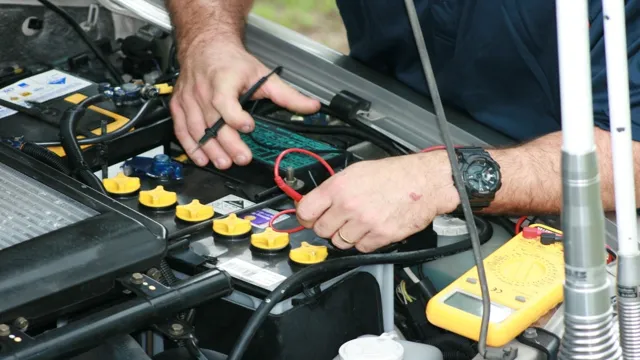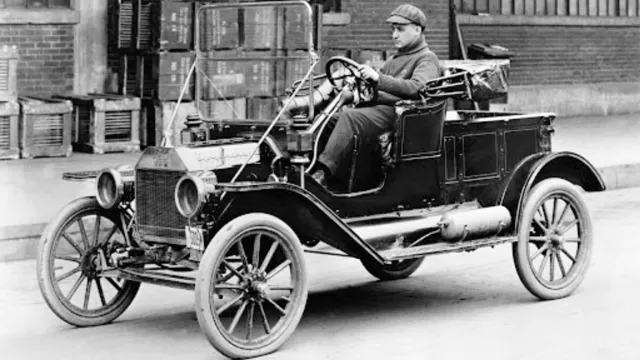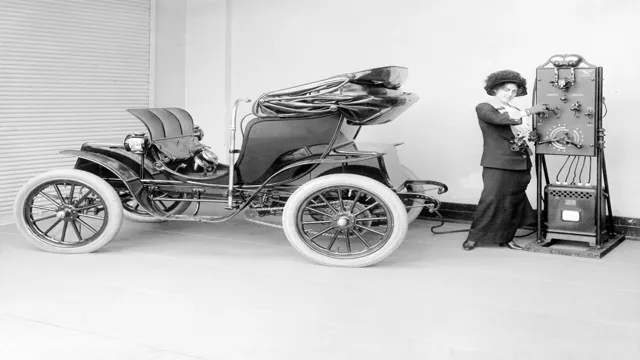The Evolution of Automotive Security: A Historical Journey through Car Electrical Systems
If you’ve ever forgotten to lock your car or had your car stolen, you may be wondering about the history of car security. From the early days of car production to today’s advanced technology, car security has come a long way. In the early 1900s, car owners relied on simple locks and alarms to protect their vehicles.
However, as car theft became more prevalent, car manufacturers began incorporating more advanced security features into their designs. Today, cars come equipped with sophisticated anti-theft systems, GPS tracking, and biometric authentication. Join us as we explore the fascinating history of car security and how it has evolved over time to provide better protection for your vehicle.
Early Electronic Security
When it comes to the history of car electrical security, the early electronic systems used were relatively simple, consisting of just a basic alarm with a loud siren. However, many car manufacturers began to implement more advanced security measures in the 1990s, such as immobilizers that made it harder to steal a car without the correct key, and keyless entry systems that allowed drivers to lock and unlock their car remotely. As technology advanced, so did car security systems, and today we have more advanced systems like GPS tracking, remote engine start, and even facial recognition technology that can detect if an unauthorized person tries to access the car.
While these advancements have made our cars more secure, car theft remains a problem for many people, making it important to ensure that your car has up-to-date security features including alarms and immobilizers.
First alarm systems and keyless entry
In the early days of electronic security, alarm systems and keyless entry were innovative technologies that revolutionized security systems. These early electronic security systems were rudimentary by today’s standards, but they were still a giant leap forward from traditional physical security measures. Early alarm systems consisted of simple mechanical systems that triggered loud alarms when triggered, while keyless entry systems used electronic passwords or keycards to control access.
Although these technologies were exceptionally basic, they still offered significant advantages over traditional security systems. For instance, alarm systems allowed property owners to be alerted of any intrusion, while keyless entry systems allowed for an efficient and controlled access system.The development of early electronic security systems was a fundamental step that laid the foundation for modern security systems we use today.

Immobilizers and anti-theft systems
Electronic security systems have been around for decades, and one of the earliest innovations was the immobilizer. An immobilizer is an anti-theft system for vehicles that prevents the engine from starting unless the correct key is used. The first immobilizers were introduced in the late 1980s and used a small electronic chip embedded in the key to communicate with a receiver in the car.
These systems proved quite effective at preventing thefts, and many car manufacturers quickly began incorporating them into their vehicles. Since then, there have been many other advances in electronic security, including alarm systems, GPS trackers, and even facial recognition technology. However, the immobilizer remains one of the most reliable and effective anti-theft measures available today.
Current Technology
The history of car electrical security is one that has evolved over time. In the early days of automobiles, very little security was in place to prevent theft. As cars became more sophisticated, however, so did the methods used to protect them.
The introduction of electronic locks and keys, for example, allowed for greater control over who could access a vehicle. In recent years, car companies have also started to incorporate advanced security systems, such as fingerprint scanners, into their vehicles. This has helped to make it much more difficult for thieves to steal cars.
Despite these advancements, however, car theft remains a significant problem in many parts of the world. As criminals become more sophisticated in their methods, car manufacturers will need to continue to innovate in order to stay ahead of them.
RFID and biometric security systems
RFID and biometric security systems are two current technologies used in many industries to enhance security measures. RFID stands for Radio Frequency Identification and it uses radio waves to automatically identify and track tags attached to objects or individuals. This technology can be used in access control as the tags can be embedded into ID cards or badges to grant access to authorized personnel.
On the other hand, biometric security systems use biological characteristics to authenticate individuals such as fingerprints, iris scans, and facial recognition. These systems are more secure than traditional methods such as passwords or PINs as they cannot be lost or forgotten. Combining RFID and biometrics can create a highly secure environment where access is granted only to authorized personnel with the correct biological characteristics and tagged items are tracked in real-time.
With these two technologies, businesses and organizations can improve security measures, create safer environments and prevent unauthorized access.
Software-defined cars and cyber security measures
With the advancement of technology, we are starting to see more software-defined cars on the roads. These cars utilize software and connectivity to enhance the driving experience, but also bring new cyber security concerns. It is important for car manufacturers to implement proper cyber security measures to protect against potential hacking attempts.
These measures can include encrypting data, implementing firewalls and intrusion detection systems, and utilizing secure communication protocols. As cars become more reliant on software and connectivity, the need for robust cyber security measures will only become more important. Just like how we lock our doors at home to protect ourselves from outside threats, we need to ensure our cars are secure from cyber threats as well.
Top car security system providers and their features
When it comes to car security systems, current technology has made significant advancements that prioritize the safety of your vehicle. Top providers today offer features like GPS tracking, remote start/stop, and even smartphone integration. With GPS tracking, you can know where your car is at all times, which can be especially helpful in case of theft.
You can also remotely control your car using your phone, allowing you to start or stop your vehicle from anywhere. Some systems even allow you to lock or unlock your car, control the temperature, and activate emergency services. By integrating with your smartphone or other devices, you can have access to all of the security features in one place, making it easier and more convenient to use.
Overall, current technology provides not only a higher level of protection against theft but also added convenience for car owners.
Future of Car Security
The history of car electrical security has a long and fascinating journey. The first form of automobile security was the lock and key system in the early 1900s. However, as technology advanced, so did the level of sophistication in car security.
In the early 1970s, vehicle identification numbers (VINs) were introduced to help track stolen vehicles. The 1980s saw the advent of electronic keys, which used computer chips to prevent unauthorized access to a vehicle. Since then, car security has continuously evolved to meet the challenges of new threats, such as car theft, hacking, and cyber attacks.
As we move towards a future of autonomous cars, the focus will be on creating impenetrable security systems that can protect against any potential danger. With advanced technologies such as biometric identification, real-time monitoring, and machine learning, the future of car security offers unprecedented levels of protection and peace of mind.
Self-driving cars and security implications
Self-driving cars have immense potential for revolutionizing the way we drive in the future. With the advent of self-driving cars, many security concerns have emerged that need to be addressed. Self-driving cars are equipped with a variety of sensors and cameras that are utilized to navigate and avoid obstacles.
However, these sensors and cameras pose a security risk as they can be hacked by cybercriminals who can remotely takeover the vehicle. Therefore, self-driving cars have to be designed with advanced cybersecurity features to prevent unauthorized access to control the vehicle’s systems. The future of car security depends on how well we can secure self-driving cars and make them immune to cyber attacks.
As we approach an era where self-driving cars are increasingly becoming commonplace, the development of advanced security systems for these vehicles is critical. Self-driving cars can provide significant advantages such as reduced accidents, traffic congestion, and fuel consumption. However, these benefits cannot be realized if the security concerns that come with self-driving cars are not addressed adequately.
Quantum computing and the future of encryption
Car Security As cars become increasingly connected to the internet and reliant on digital systems, the threat of cyber attacks targeting cars is growing. This has led to an increased focus on car security and the development of new technologies to protect against hackers. One of the key innovations is the use of encryption to secure the data transmitted between different components in a car.
However, there are concerns that encryption algorithms may become vulnerable to quantum computing in the future. To address this, researchers are exploring new encryption methods that are resistant to quantum computing attacks. One potential solution is quantum cryptography, which uses principles of quantum mechanics to create unbreakable encryption keys.
As the world becomes more connected, car security will continue to be a critical issue that requires ongoing innovation and development.
Conclusion
In summary, the history of car electrical security is a tale of innovation and adaptation. From early attempts at rudimentary anti-theft measures, to the intricate systems we have in modern vehicles today, manufacturers have consistently found new ways to stay ahead of tech-savvy criminals. As driving becomes increasingly automated and connected to the world around us, the importance of maintaining robust electrical security will only grow.
So if you’re planning on stealing a car anytime soon, be warned: these days, even the most sophisticated hacks might not get you very far. Happy driving!”
FAQs
What are the early forms of car electrical security?
The early forms of car electrical security included simple locks and keys that prevented unauthorized access to the car.
How has car electrical security evolved over time?
Car electrical security has evolved over time to include more sophisticated security systems such as immobilizers, alarms, and GPS tracking.
What is an immobilizer in car electrical security?
An immobilizer is a security device that prevents a car’s engine from starting unless the correct key is used.
What are the benefits of GPS tracking in car electrical security?
The benefits of GPS tracking in car electrical security include the ability to track stolen vehicles and recover them quickly, as well as the ability to monitor vehicle usage and driver behavior.
How do car thieves bypass car electrical security?
Car thieves can bypass car electrical security through various methods such as using electronic hacking tools, duping the car’s key fob signal, or physically breaking into the car’s wiring system.





